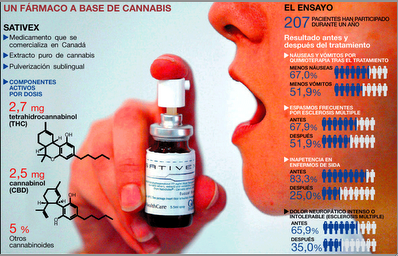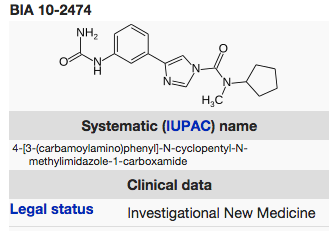March 20, 2014 From Dale Gieringer in Vienna, Austria
Cannabis medicine scored an impressive debut at the UN Commission on Narcotics Drugs, as the government of Austria hosted an excellent and informative presentation on the “Best Practices in the Use of Cannabis for Medical Purposes.” The panel featured presentations by Dr. Mark Ware, an expert cannabinoid practitioner from McGill University, Canada, and Dr. Eberhard Pirich of Bionorica, which supplies cannabis pills and extracts for Austria’s medical cannabis program.
The two doctors provided a comprehensive survey of the state of cannabinoid medicine in their countries, the different varieties and forms of cannabinoid medicines available, and the many different indications for which they have shown promise particularly in the area of palliative care. Ware called for global collaboration on research, including such matters as studies of specific strains and phenotypes. Pirich listed a host of potential uses, including neuroprotection, appetite, relaxation, treatment of chronic pain and neurodegenerative diseases, forgetting of unpleasant memories, and “most importantly” psychiatric disorders including PTSD, ADHD, depression, and burn-out syndrome.
Speaking last, the UNODC’s Chief of Drug Prevention and Health, Dr. Gilberto Gerra, was clearly impressed by the evidence. “We are in front of a treasure,” he declared, noting that there are some 85 cannabinoids and 483 substances in the plant,. He went on to display a picture of a bottle of Eli Lilly Cannabis Americana from 1913 and asked why it was no longer available. (This question may have been a rhetorical dig at American drug authorities, who weren’t in attendance, but there was unfortunately no time for audience discussion on this point).
Gerra cautioned that it was “not healthy” to make unsubstantiated claims that cannabis cures cancer or to blindly accept Dr. Gupta’s anecdotal reports, and he also warned against legislating drugs by the ballot. Nonetheless, he concluded with a ringing endorsement for more controlled scientific studies to explore and develop cannabis medicine.
The UNODC’s support for this discussion marks a significant breakthrough on the world stage for medicinal cannabis. It is a sorry commentary on the persistent backwardness of the U.S. government that it has never sponsored a similar event, despite the fact that the modern medical marijuana movement originated in the U.S, and its suppression was the work of U.S. drug authorities.
The UNODC deserves further credit for focusing on the problem of inadequate access to opioid narcotics, in a session entitled “Coordinated Efforts to Increase Access to Controlled Drugs for Medical Purposes” sponsored by the governments of Australia and Panama. The root of the problem is the UN’s own complicated system of treaty controls, which have drastically restricted access to opioids in the developing world, leaving an estimated six million cancer patients in untreated pain worldwide.
Allocation of legal narcotics is skewed heavily toward the U.S., Canada, and developed countries, leaving 17% of the world’s population with 92% of the opioid medicine. While global consumption of legal opioids averages 61.66 milligrams/person/year, the level is 812 mg in Canada and 749 in the U.S., but just 0.014 in Nigeria and Myanmar. Speakers agreed that regulatory barriers were a major problem: in India, legal morphine virtually disappeared after the country was forced to adopt the UN treaties (which also wiped out India’s long-standing ganja market).
The problem is so bad the UN has launched a demonstration program in Ghana to try improve access to legal narcotics. Both UNODC Director Yury Fedotov, who attended the session, and INCB President Raymond Yans repeatedly stressed the importance of improving access to controlled medicines.
Amidst these hopeful signs of progress, there was also familiar backsliding rhetoric from the other side. A classic example was a session on “Cannabis Policy: Experience of Colorado Under Legalization,” led by Kevin Sabet. Featured was a presentation by Dr. Christian Thurstone, from an addiction and youth substance abuse clinic in Colorado, who recited a litany of all the worst things that might be said about marijuana: that prenatal exposure lowers IQ and increases risk of depression and hyperactivity; that second-hand exposure causes lethargy and respiratory arrest (!), that 1 in 6 adolescents develop addiction; that heavy use further degrades IQ, raises the risk of anxiety, and is thought to cause permanent brain changes; that users are half as likely to use condoms, are twice as likely to use other drugs, and manifest aggression due to withdrawal (!), that 1 in 9 users suffer “physical addiction,” chronic memory impairment, elevated accident risks, and a fourfold greater risk of heart attacks (!).
Looking at Colorado, Dr. Thurstone claimed that past month prevalence of marijuana use among school children in Denver had increased to 28% from just 7.4% in 2006; that school expulsions for MJ were up, as were toxic exposures at the Children’s Hospital, that 10% of all driving fatalities showed exposure to MJ (versus just 4% nationwide), that USPS postal interceptions of marijuana had increased to 209 from just 15 in 2010; that the average urine levels of cannabinoids among adolescent users had risen 33%, indicating more intensive use, etc., etc.
Kevin Sabet wound up the panel by emphasizing that there were many alternatives between legalization and drug war, and that one can be in favor of human rights and access to treatment and medication, but against legalization. Warning about “big marijuana,” he invited the audience to visit downtown Denver and be “bombarded by marketing for MJ.” He ended with a “plea for balance” and better data gathering to determine the best policies. Unlike some other panels, there was no time left for audience discussion.
Previously, Uruguay sponsored a separate session about cannabis legalization featuring Christian Sederberg from Colorado and Alison Holcombe from Washington. That panel dealt more or less factually with the particulars of the recent legalization initiatives. Like the other cannabis sessions it was heavily attended. Unlike Sabet’s session, it also left time for audience discussion, which was polite if in some cases skeptical.
The U.S. delegation was clearly embarrassed by the Colorado and Washington state situation, but made a point of affirming the U.S.’s adherence to the treaty system and determination to monitor the situation carefully. A minority of countries, mostly Latin American, called for a re-examination of the treaties, but the majority remain inclined to strict enforcement, led by a strong prohibitionist block in Asia, the Middle East, and Russia. Revision of the treaties will remain off the agenda through the big UN General Assembly Meeting in 2016. However, the openness with which this year’s Vienna meeting was conducted raises hopes of a substantive debate in years thereafter.
Many thanks to the UNOCD for opening this event to public discussion by NGO’s, a record number of which, 275, attended the meeting. My own personal thanks to the ACLU for giving me credentials to attend.
Dale Gieringer, California NORML
California NORML
2261 Market St. #278A, San Francisco CA 94114 – www.canorml.org





